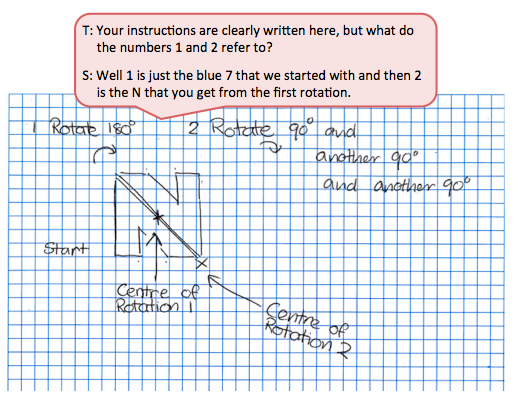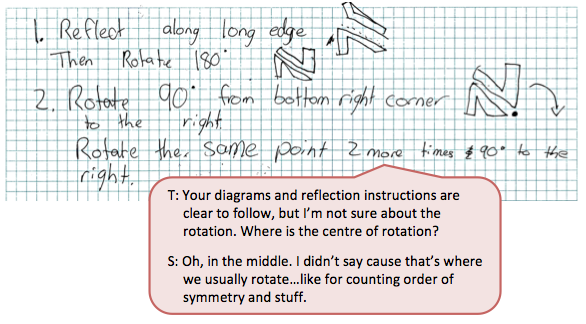The purpose of this activity is to provide students with the opportunity to explore the invariant properties of a shape under transformations, in order to complete a given design and to communicate the transformations necessary to achieve this design.
This activity assumes the students have experience in the following areas:
- Applying the transformations of translation, reflection, and rotation to create designs.
- Combining a series of transformations to produce and image.
The problem is sufficiently open ended to allow the students freedom of choice in their approach. It may be scaffolded with guidance that leads to a solution, and/or the students might be given the opportunity to solve the problem independently.
The example responses at the end of the resource give an indication of the kind of response to expect from students who approach the problem in particular ways.

The 1974 Commonwealth Games logo can be constructed from a series of transformations on
a single N.
Give a set of instructions that take the upper left hand blue 7, that would:
- Create the upper left hand N.
- Use the upper left hand N to build the remainder of the logo.
The following prompts illustrate how this activity can be structured around the phases of the Mathematics Investigation Cycle.
Make sense
Introduce the problem. Allow students time to read it and discuss in pairs or small groups.
- Do I understand the situation and the words? (Students may need support to unpack the word transformations and recall the meaning of translation, reflection, and rotation.)
- Are the instructions clear? State them in your own words?
- Does this look/sound like a problem I have worked on before?
- What will my solution look like? (The solution will specify the transformations that are used to create the logo and show those transformations diagrammatically.)
Plan approach
Discuss ideas about how to solve the problem. Emphasise that, in the planning phase, you want students to say how they would solve the problem, not to actually solve it.
- How will I show my workings in a step-by-step way?
- What tools would be useful? (Access to a mirror and making cut-outs of shapes may be useful. Using drawing software, Geogebra or PowerPoint on a computer will allow experimentation with the transformations.)
- What strategies can I use to get started? What is my first step?
- Do I expect there to be a pattern in the way the logo was created? Why?
Take action
Allow students time to work through their strategy and find a solution to the problem.
- Have I shown my workings in a step-by-step way?
- Does my answer seem correct? Is it what I expected the transformations to be?
- How can I check the transformations work using cut-outs, mirrors or software?
- Are there any patterns?
- How might I describe the patterns? (students may need support in using the language of transformations, including lines of reflection and the angle and centre of rotations)
Convince yourself and others
Allow students time to check their answers and then either have them pair share with other groups or ask for volunteers to share their solution with the class.
- What is my solution? Have a provided what was required?
- Is my working clear for someone else to follow?
- How would I convince someone else I am correct?
- Could the logo be created in another way?
- What connections can I see to other situations, why would this be? (Logos and artistic designs often involve symmetry.)
- What could I try differently next time?
- What could I find out next?
- What mathematics might I need to learn, resulting from this investigation?
Examples of work
Work sample 1
The student finds and describes the transformations necessary to build the given design from a specified starting shape.
Click on the image to enlarge it. Click again to close. 
Work sample 2
The student finds and describes the transformations necessary to build the given design from a specified starting shape.
